Abstract
Physiological responses of the Crassulacean acid metabolism (CAM) plant Opuntia ficus-indica (Cactaceae) were studied on a commercial plantation in central Chile. Young cladodes (flattened stems) and flower buds exhibited daytime stomatal opening, whereas mature cladodes and fruit exhibited the nocturnal stomatal opening characteristic of CAM plants. Severe water stress suppressed the nocturnal stomatal opening by mature cladodes, but their high water vapor conductance occurring near dawn was not affected. Nocturnal acidity increases were not as sensitive to water stress as was the nocturnal stomatal opening. The magnitude of the nocturnal acidity increases depended on the total daily photosynthetically active radiation (PAR), being 90% PAR-saturated at 27 moles per square meter per day for a mean nighttime air temperature of 5°C and at 20 moles per square meter per day for 18°C. Inasmuch as the PAR received on unshaded vertical surfaces averaged about 21 moles per square meter per day, nocturnal acidity increases by the cladodes were on the verge of being PAR-limited in the field. The net assimilation rate, which was positive throughout the year, annually averaged 3.4 grams per square meter per day for 1.0- and 2.0-year-old plants. Plants that were 5.4 years old had 7.2 square meters of cladode surface area (both sides) and an annual dry weight productivity of 13 megagrams (metric tons) per hectare per year when their ground cover was 32%. This substantial productivity for a CAM plant was accompanied by the highest nocturnal acidity increase so far observed in the field, 0.78 mole H+ per square meter.
Full text
PDF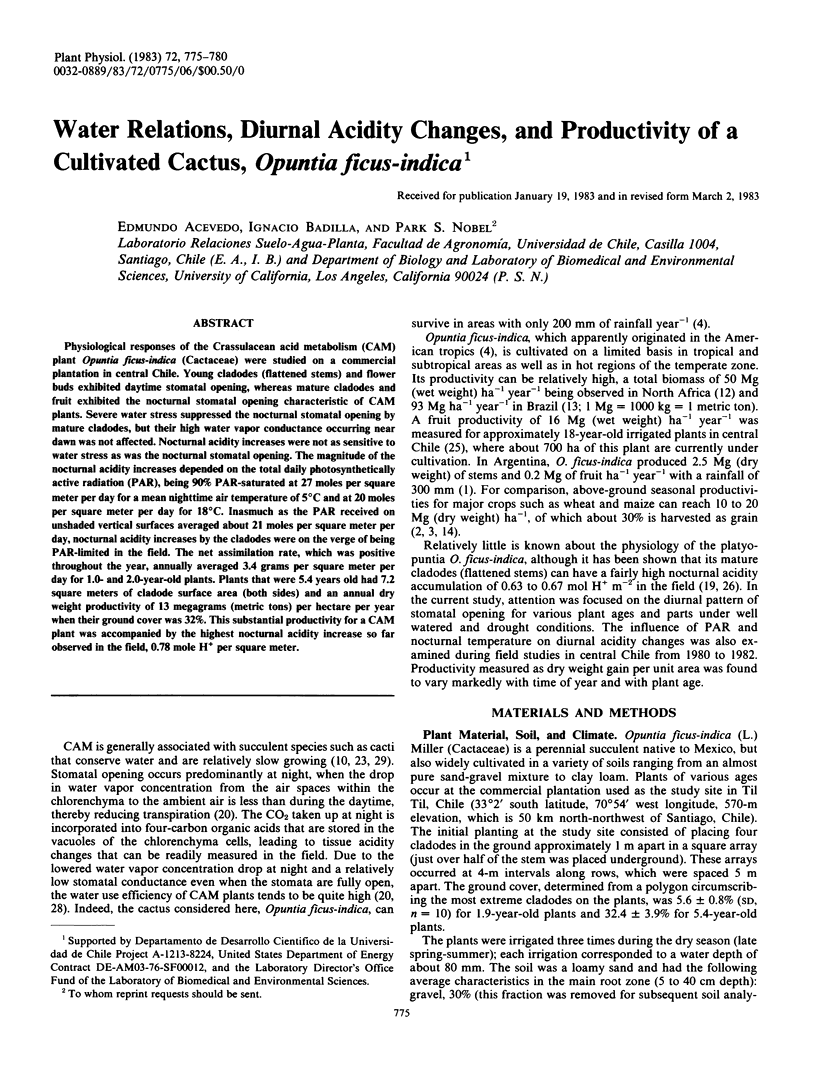
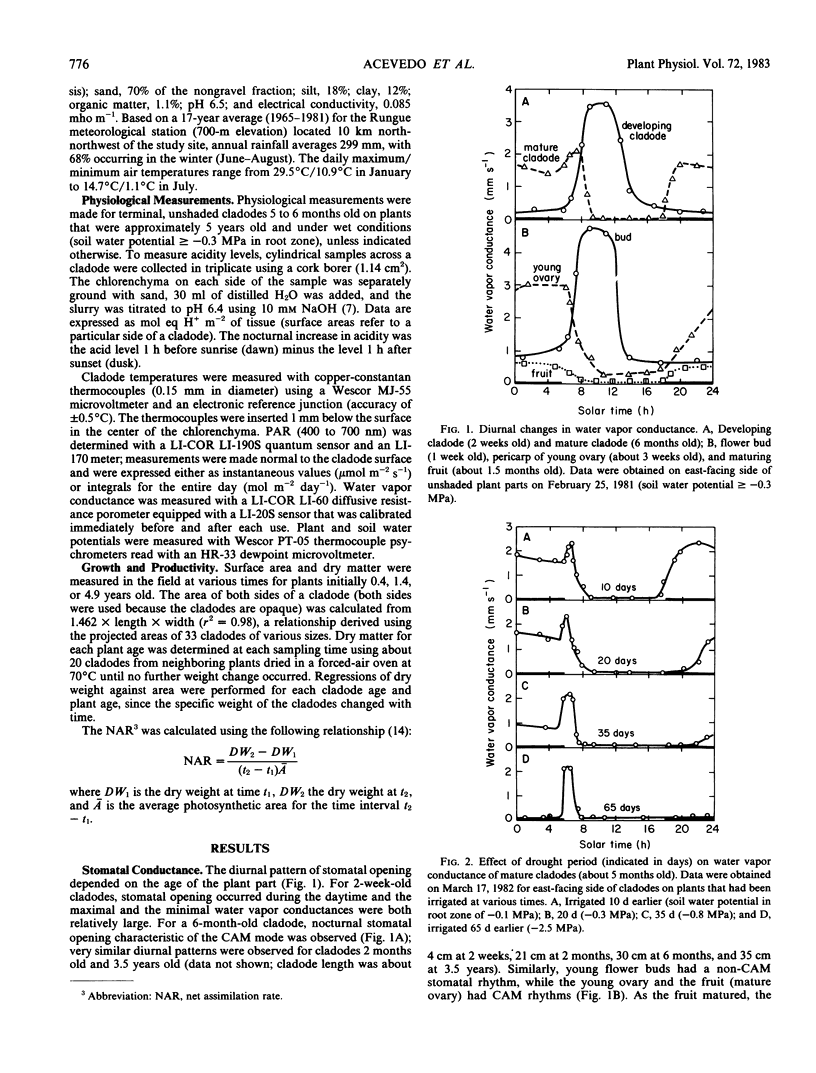
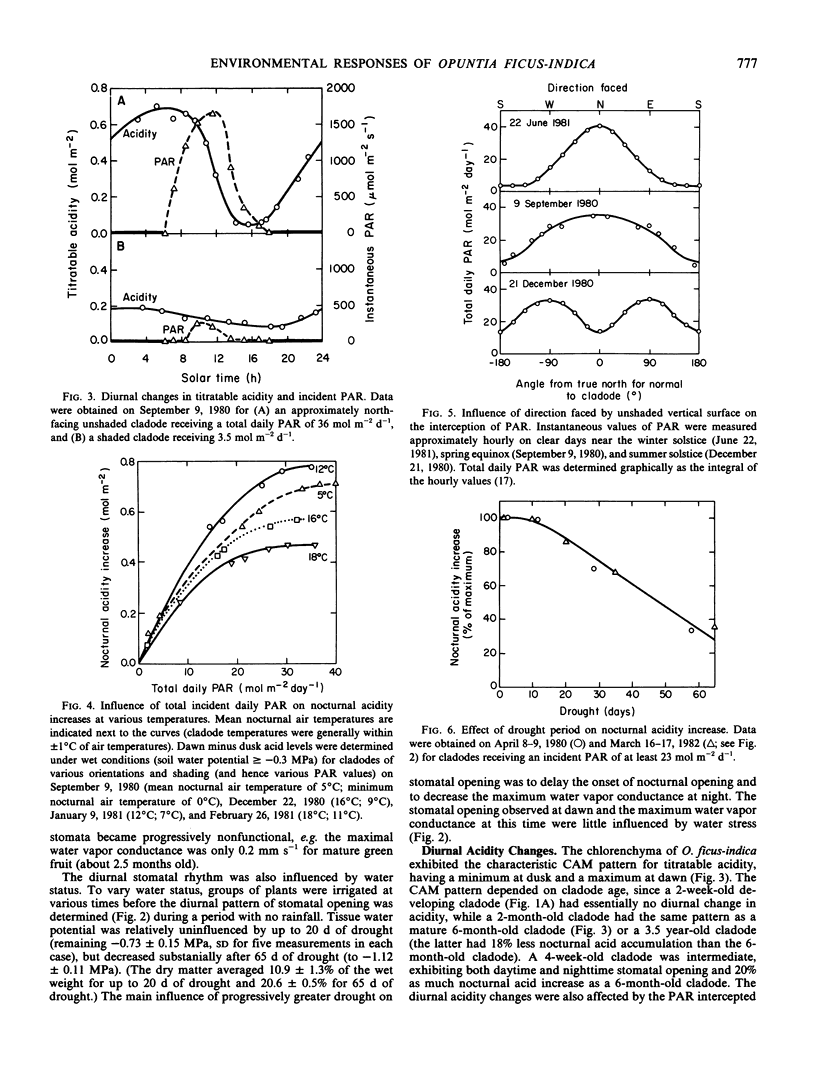
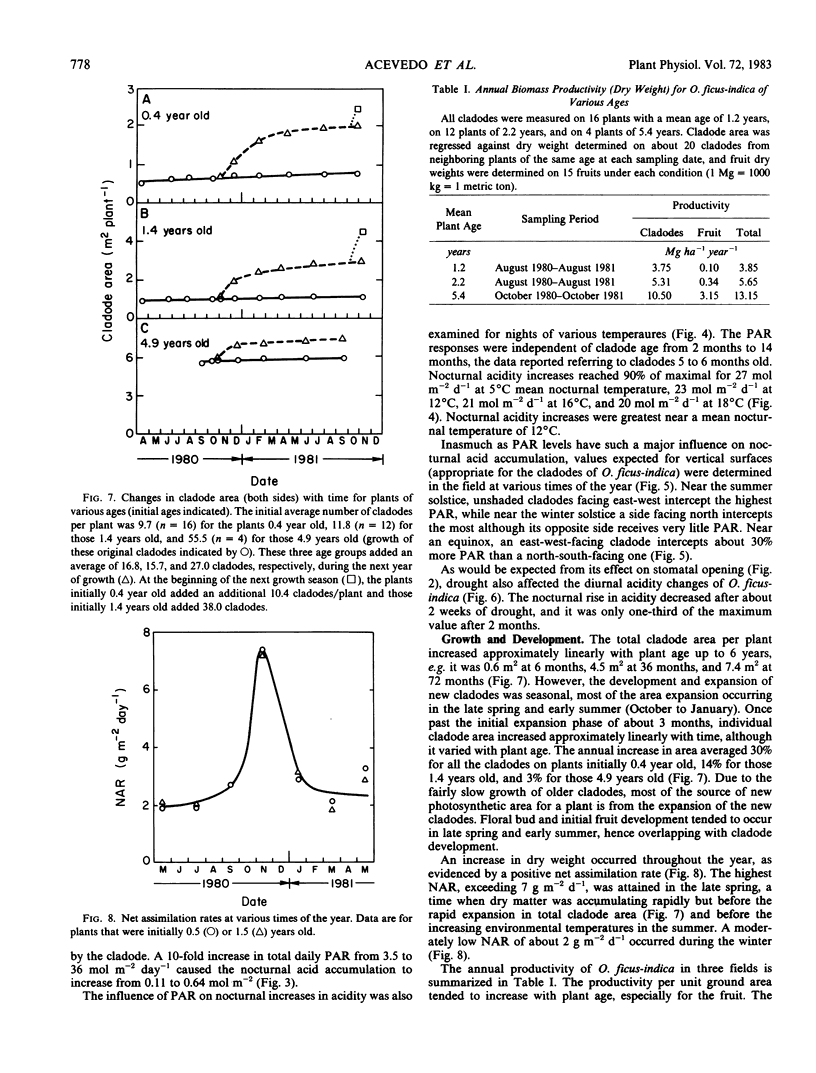
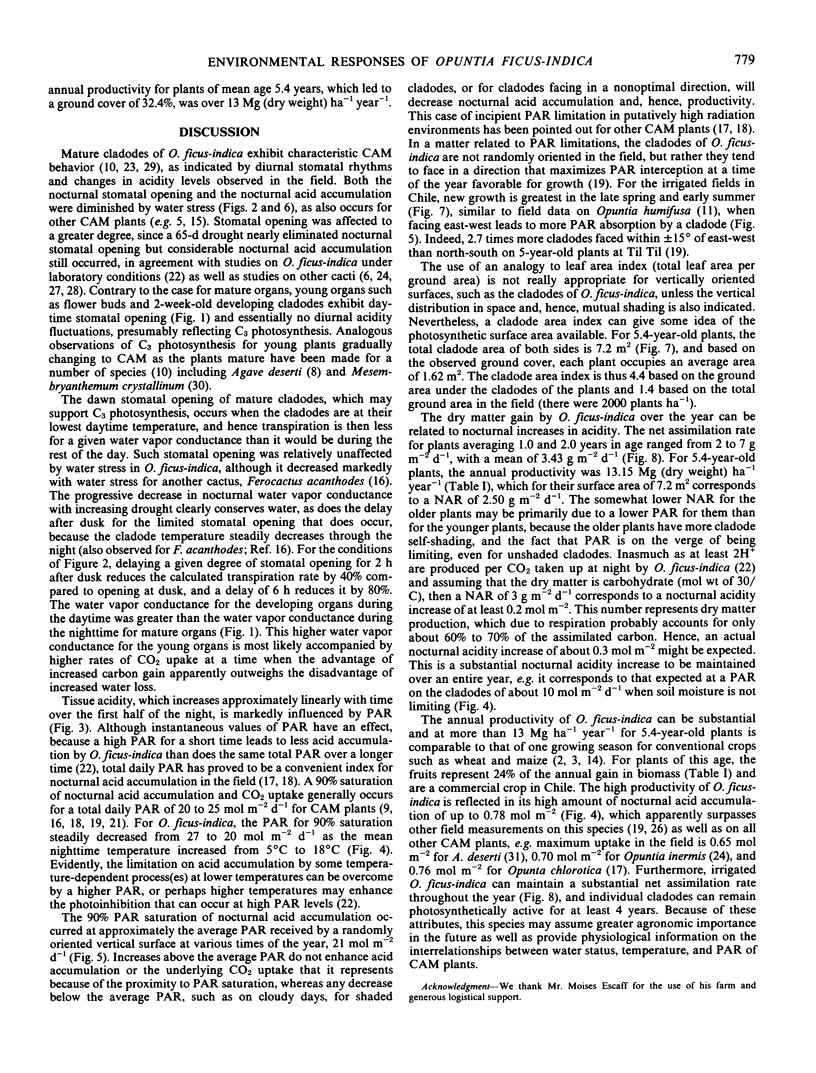
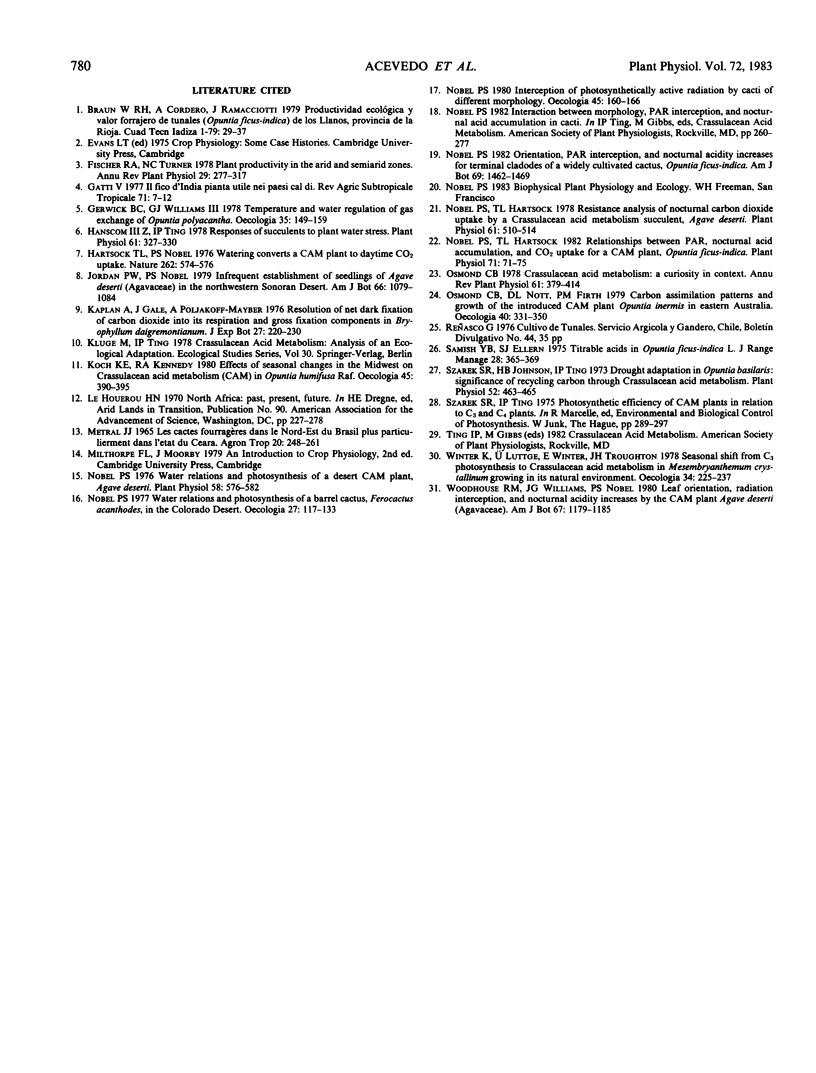
Selected References
These references are in PubMed. This may not be the complete list of references from this article.
- Hanscom Z., Ting I. P. Responses of succulents to plant water stress. Plant Physiol. 1978 Mar;61(3):327–330. doi: 10.1104/pp.61.3.327. [DOI] [PMC free article] [PubMed] [Google Scholar]
- Nobel P. S., Hartsock T. L. Relationships between Photosynthetically Active Radiation, Nocturnal Acid Accumulation, and CO(2) Uptake for a Crassulacean Acid Metabolism Plant, Opuntia ficus-indica. Plant Physiol. 1983 Jan;71(1):71–75. doi: 10.1104/pp.71.1.71. [DOI] [PMC free article] [PubMed] [Google Scholar]
- Nobel P. S., Hartsock T. L. Resistance Analysis of Nocturnal Carbon Dioxide Uptake by a Crassulacean Acid Metabolism Succulent, Agave deserti. Plant Physiol. 1978 Apr;61(4):510–514. doi: 10.1104/pp.61.4.510. [DOI] [PMC free article] [PubMed] [Google Scholar]
- Nobel P. S. Water Relations and Photosynthesis of a Desert CAM Plant, Agave deserti. Plant Physiol. 1976 Oct;58(4):576–582. doi: 10.1104/pp.58.4.576. [DOI] [PMC free article] [PubMed] [Google Scholar]


